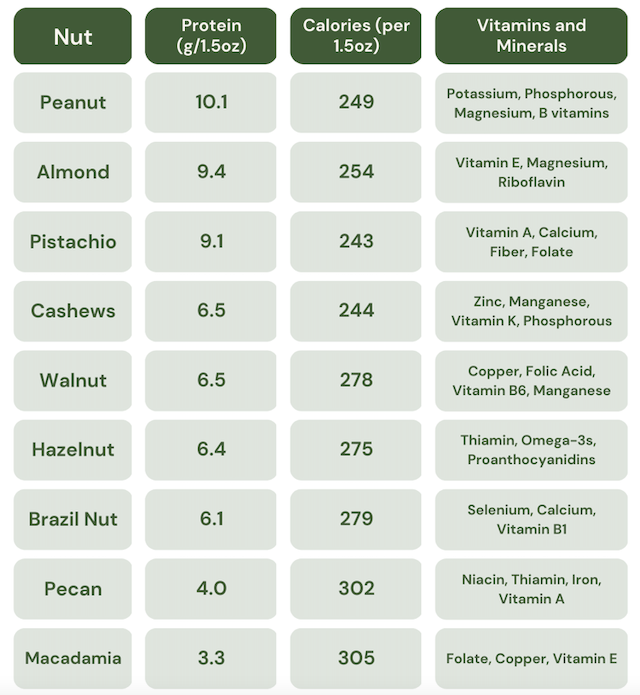15 high-protein nuts and seeds
Nuts and seeds are key to meeting nutrient requirements in a meatless diet. (Image by Miguel Á. Padriñán)
I stopped eating meat at a point in my life when environmental preservation was more important to me than preserving my health. It started after I’d fallen down the rabbit hole of videos detailing the damage factory farming does to the global climate. What sealed the deal for me was the Netflix documentary Cowspiracy: The Sustainability Secret, which exposed not only the extent of the environmental degradation created by factory farming but the failure to check it. I was emboldened to stop eating meat and have never looked back.
Protein Score Card comparing the green house gas emissions and retail cost of different protein sources from the World Resources Institute
When I stopped eating my most reliable source of protein I never questioned how I’d replace it. Now, in my 20s, I am taking the time to learn how to satisfy my nutritional and health needs, including getting eight hours of sleep a night and drinking at least one hydro flask full of water a day. I’ve also discovered it’s not that hard to meet protein needs on a plant-based diet.
Many people hesitate to switch to a plant-based diet, or even reduce meat consumption, for a variety of reasons including the misconception that a diet lacking in meat will be one lacking in protein. Adequate protein intake is vital to bodily functioning, especially among people dealing with chronic illnesses. The average person needs seven grams of protein for every 20 pounds of body weight. However, a protein-filled, plant-based diet is not only possible but can be cheaper and healthier than a meat-focused diet.
Take nuts and seeds. Not only are they a good source of protein, they carry the added bonus of containing fiber and essential vitamins. And the saturated fats found in meat have been linked to heart disease and chronic cholesterol issues, while the fats found in nuts and seeds are healthy unsaturated ones.
Another plus: The carbon footprint from nuts and seeds is significantly less than that of meat. It takes 54.88 kg of a carbon dioxide equivalent to produce a single hamburger patty. By comparison, only 0.29 kg of a carbon dioxide equivalent is used to harvest the same amount of protein from nuts.
I’ve gradually introduced nuts and seeds into my meals over time, like adding walnuts and pumpkin seeds to my morning oatmeal and toasted almonds to salads. I started by focusing on the highest-protein nuts and seeds but now I just make sure to eat a variety. A mix is healthier and more interesting and you can’t really go wrong with any blend. I continue to eat a diet free of meat, and not miss it at all.
Table of Nuts organized from highest to lowest protein content, caloric content, and vitamin and mineral content.
Table of Seeds organized from highest to lowest protein content, caloric content, and vitamin and mineral content.
Georgiana Prevost is a Stone Pier Press News Fellow based in Berkeley, CA
Related Articles
We’ve got the beans. Now let’s enjoy them.
A guide to plant-based proteins
3 ways to take your tofu to the next level












